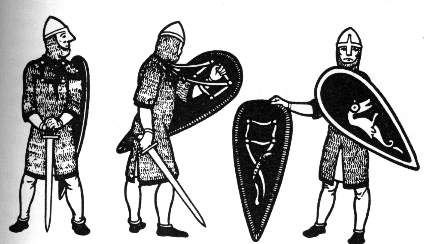Knights, like Sir Lancelot, Sir Gawain, and Sir Tristan, had to understand the system of badges that later became known as heraldry. Personal badges on shields helped to identify contestants in tournaments, which were mock battles, that were common in the Middle Ages. These badges had the same purpose as numbers on the jerseys of sports team members. These badges were sometimes painted on their clothing, and also appeared on their shields and armor. These shield badges are often called the �coat-of-arms�. They appeared on the seals of important documents and are still painted on many castle halls and Medieval tombs.


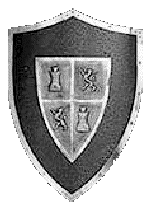
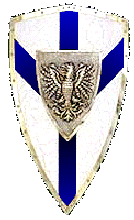
The knight�s shield protected him from flying arrows and sword blows. Even King Arthur had a shield with his own coat-of-arms, which happened to be royal crowns. As shown above, it began as kite-shaped or round (like the first and third), but became more triangular (like the second and fourth) by the eleventh century. These shields could sometimes strap over the knights soldier to free his arms. However, it was more convenient during battle for him to strap it over his left forearm.

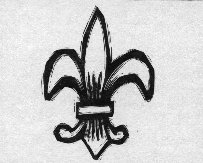
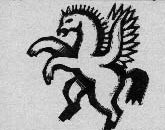

A family could choose which picture to use on their shields. Richard the Lionheart chose lions for his soat-of-arms, since a lion was represented in his name. Lions were also popular because families wanted to be thought of as strong and brave. The fleur, pegasus, and griffon were used as well. Others were just patterns that were bold and easy to recognize. Crosses were also common, since that was a symbol of Christianity.
All parts of the shield have special names. The field was the background color of the shield. The charge was the image on the shield, such as lions or fleurs. Each side of the shield had its own name as well. The top was called the chief, the bottom the base, the right side the dexter, and the left side the sinister. Seven colors were used in heraldry: red, blue, black, green, and purple, and sometimes gold and silver.
